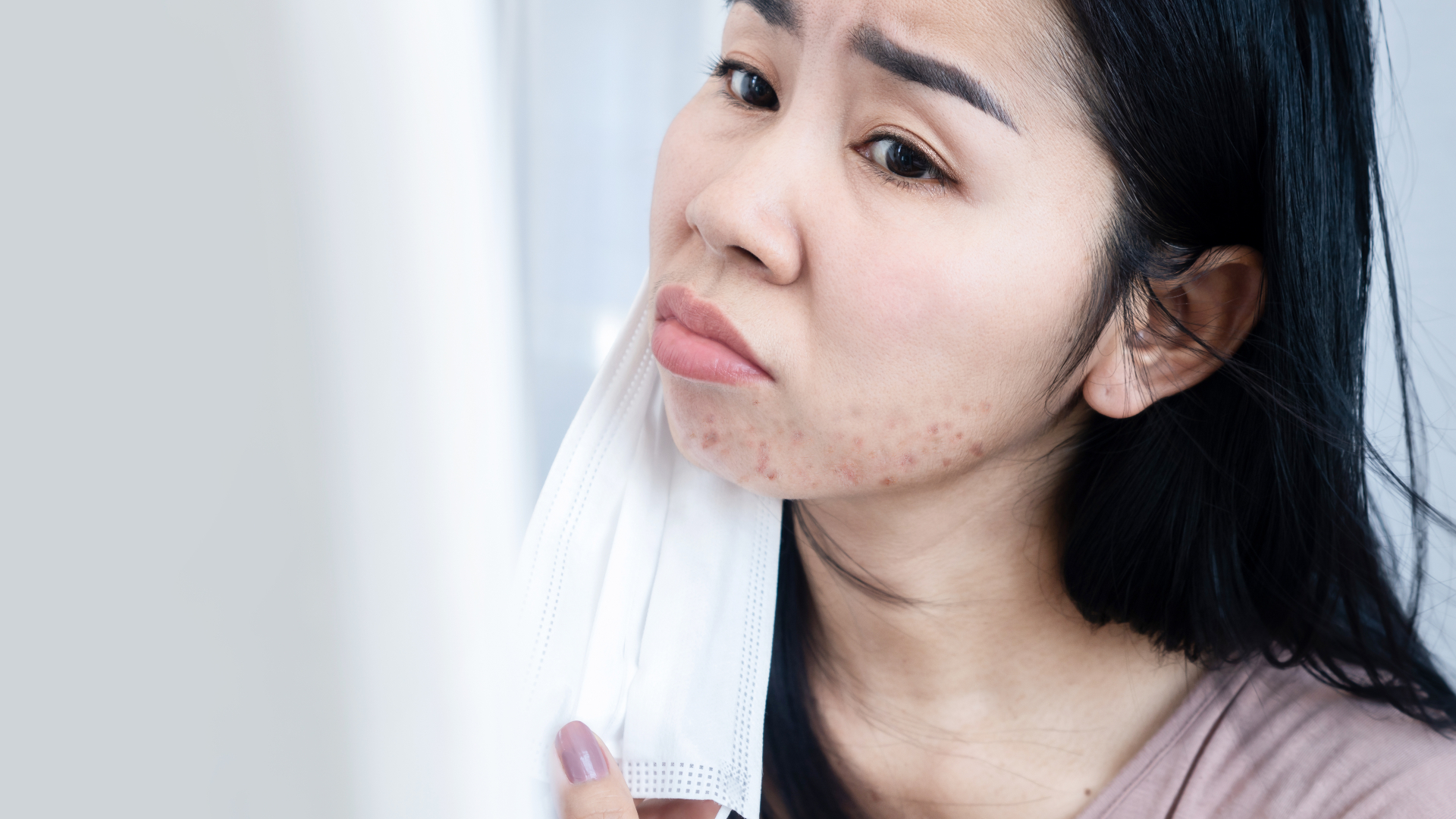Atrium Health issued the following announcement on Feb. 22.
For some people, wearing a face mask can cause - or even worsen - breakouts. Atrium Health Wake Forest Baptist's Dr. Rita Pichardo shares tips on how to prevent "maskne" and how to properly treat your skin if breakouts should arise.
Even as mask mandates begin to lift in many areas, face masks aren’t going away entirely any time soon. And while wearing a mask protects you and others from COVID-19, it can cause or exacerbate skin breakouts and irritation, resulting in what is called ‘maskne.’
What is maskne?
According to Rita O. Pichardo, MD, a dermatologist at Atrium Health Wake Forest Baptist and associate professor of dermatology at Wake Forest School of Medicine, maskne is “a combination of acne and irritation due to the prolonged use of a face mask that usually affects the jawline, around the mouth and chin.”
Dr. Pichardo emphasizes that maskne isn’t only acne related. While mask-wearing can cause blackheads, whiteheads and pimples, it can also result in flare-ups of other skin conditions.
What causes maskne?
Face masks offer effective protection against COVID-19, but they also seal in warm air and moisture, creating an environment that “allows facial oils, sweat and bacteria to be trapped on the skin,” Dr. Pichardo says. This type of environment clogs pores, leading to inflammation and breakouts.
Are certain people more prone to maskne?
Anyone can get maskne, but factors such as skin type, climate and type of mask worn can make people more prone to maskne.
Dr. Pichardo also shares that people are more likely to experience maskne if they have a history of certain skin conditions, such as:
- Acne
- Rosacea
- Eczema
- Contact dermatitis
- Perioral dermatitis
- Seborrheic dermatitis
- Simplify your skincare: Wash away oil, bacteria and makeup with a non-irritating face wash or cleanser. Dr. Pichardo recommends “oil-free” products.
- Moisturizing matters: Adding moisture behind your mask may seem like a bad idea, but a non-comedogenic moisturizer will create a barrier between your skin and your mask, providing protection against maskne. Dr. Pichardo recommends an “oil-free” moisturizer to keep your skin moist while avoiding irritation from the mask.
- Minimize your makeup: If you can avoid wearing makeup, Dr. Pichardo says that’s the best option. This gives your skin a break and a chance “to breathe.” If you have to wear makeup, she recommends “non-comedogenic” or “oil-free” makeup.
- Take mask breaks: The American Academy of Dermatology recommends removing your mask for 15 minutes every four hours to allow your skin to breathe and take a break.
- Choose the right mask: Your mask should be well fitted to your face, not too loose or tight; have two or more layers; be made of a soft and gentle material like cotton; and have a nose wire. Avoid synthetic materials like polyester, rayon and nylon. These materials retain moisture and can irritate the skin.
- Clean or dispose of your masks properly: Discard disposable masks – such as surgical masks and KN95 masks – after a day of use, especially when they get dirt or makeup on them. Wash cloth masks after each use. Use a fragrance-free detergent and let the mask dry completely.
Already struggling with maskne? Try these treatment options:
- Face cleanser: A gentle, natural ingredient cleanser helps clean dirt and oils without dehydrating your skin. If you are acne-prone, look for a natural ingredient cleanser that contains salicylic acid.
- Dandruff shampoo: Ketoconazole, an anti-fungal shampoo most commonly used to treat dandruff, helps remove yeast build up. If you have seborrheic dermatitis around your nose and mouth that is aggravated by your mask, Dr. Pichardo says using a ketoconazole shampoo as a daily face wash will help.
If your skin is red, scaling, with pimples, and it gets irritated by the continued use of the mask, Dr. Pichardo says it’s time to contact a dermatologist.
“Your dermatologist is the best specialist to suggest the appropriate skin care regimen you need—based on your skin type—and type of mask you should use.”
To learn more about our dermatology services and/or to schedule an appointment with one of our dermatologists, please visit WakeHealth.edu/dermatology.
Original source can be found here.

Source: Atrium Health




 Alerts Sign-up
Alerts Sign-up